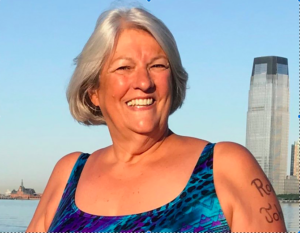 Patty Gallant-Charette, a 69 year-old woman from Maine has swum vast distances across the world’s oceans, in particular the waters of “Oceans Seven,” the most treacherous and turbulent ocean channels in the world. Oceans Seven was devised in 2008 as the swimming equivalent of the Seven Summits mountaineering challenge (see Robert Whitby 8/26/20). It includes the North Channel, the Cook Strait, the Molokaʻi Channel, the English Channel, the Catalina Channel, the Tsugaru Strait and the Straits of Gibraltar. She has managed to complete all of these save for the Cook Strait, which she has attempted twice, almost made it the last time, and is in line to try it again in the next few years. Aside from these waters, she has swum across many lakes of the world including Lake Tahoe, Loch Ness, Lake Ontario and Lake Windermere.
Patty Gallant-Charette, a 69 year-old woman from Maine has swum vast distances across the world’s oceans, in particular the waters of “Oceans Seven,” the most treacherous and turbulent ocean channels in the world. Oceans Seven was devised in 2008 as the swimming equivalent of the Seven Summits mountaineering challenge (see Robert Whitby 8/26/20). It includes the North Channel, the Cook Strait, the Molokaʻi Channel, the English Channel, the Catalina Channel, the Tsugaru Strait and the Straits of Gibraltar. She has managed to complete all of these save for the Cook Strait, which she has attempted twice, almost made it the last time, and is in line to try it again in the next few years. Aside from these waters, she has swum across many lakes of the world including Lake Tahoe, Loch Ness, Lake Ontario and Lake Windermere.
Patty’s swimming feats have received world-wide attention, and last November, she was inducted into the International Marathon Swimming Hall of Fame. She holds six Guinness World Records (Guinness only recognizes iconic locations):
- In 2017, oldest woman to swim the English Channel (21 miles) at age 67
- In 2018, oldest person to complete the Triple Crown of Open Water swimming: English Channel (21 miles), Catalina (21 miles) and the circuit around Manhattan Island (28 miles) at age 67
- Oldest person to swim the North Channel (21 miles), Ireland to Scotland at age 66
- Oldest woman to swim the North Channel (21 miles) age 66
- Oldest person to swim Loch Ness (22 miles) in Scotland age 67
- Oldest person to complete the Triple Crown of Lake Monster Swims (Lake Tahoe 21 miles, Loch Ness 22 miles, Lake Memphremagog 22 miles) age 67.
Arranged by Tom Igoe
Bryan Hooper’s notes on the talk:
Pat Gallant-Charette came across initially as a mild-mannered, very pleasant, caring grandmother from Maine, but under the guidance of a well-prepared and gently questioning Tom Igoe, Pat revealed the steel in the backbone of her character that supports the incredible accomplishments this former nurse has achieved in long-distance swimming around the world. She currently holds six world records for marathon swimming.
Some 23 years ago, the tragic early death at 34 of one of Pat’s brothers prompted her son, Tom, to commemorate his uncle’s memory by participating in the annual Peaks to Portland swim in Maine. Pat told her son she would like to enter that race, too, but was too old at 46 to contemplate the training regimen required to even attempt the effort. Tom responded with what has become Pat’s mantra ever since: “Ma, you can if you try!” And try she did. Pat trained for a year before competing and succeeding in swimming the 2.4 miles involved, and promptly decided she had enjoyed it so much she would carry on training and entered the race again the following year. From there it was a short step (stroke?) to swimming a lake in Maine that was twice the distance, and by the time she was in her fifties Pat was swimming in events that took 7 hours to complete.
To train for these marathons required starting small and building up stamina and strength by swimming one to two hours most days, and making a major swim of three to four hours every 2-3 weeks. To prepare for coping with the low temperatures encountered in particular locales, e.g., the English Channel, she takes ice baths to develop tolerance. Additionally, as part of her team’s effort and preparation for events, they learn and practice techniques for treating hypothermia, and for dealing with jellyfish stings.
Further effort was needed by Pat to overcome her fear of ocean swimming which arose from an incident in her childhood when a rising tide forced two of her brothers and Pat to swim to shore from their clamming area on a sandbar. On the way to shore one brother saw a fin and cried “shark!” Pat panicked and flailed, before the actual creature – a seal – surfaced before her and she recovered sufficient composure and strength to make it to safety. Since then, she always practices in shallow waters, and has to psych herself whenever she enters an ocean event.
Pat has conquered six of the seven major ocean straits in the world, but has yet to finish the swim across the Cook Strait in New Zealand. Cold water temperatures around 52°-54° are encountered along with extremely tricky currents. To improve her performance, Pat is focusing on losing weight and developing a better swimming stroke to enhance her speed. The Covid-19 pandemic has resulted in New Zealand suspending international competitive events so she will be unable to try again for perhaps another two to three years. We wish her well in the endeavor.
There were a number of video clips used during the actual session involving swimming around Manhattan and across the English Channel, and they can be seen on the link given below. Of particular interest is the brief video from a photo shoot for the swimwear manufacturer, Swimsuits for All, which includes Pat together with Brooke Shields and other models. Finally, look especially for the point in the Q&A session (around 66 minutes in) when Pat casually dropped into her answer the fact that she swam for as long as 24 hours when swimming Lake Ontario. The look of astonishment and amazement on the face of her questioner is also one for the record books.
Click here for a video of her presentation: https://youtu.be/MN5bu0Ez1ek

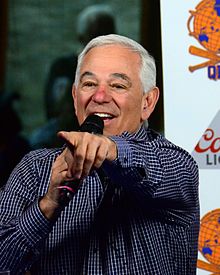
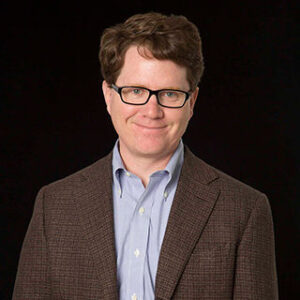
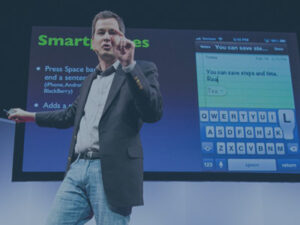 David Pogue will talk about the subject covered in his upcoming book, “How to Prepare for Climate Change.“ He notes that “the number of people who believe that the climate is not changing are dwindling, and it’s currently about 12% of Americans. Twice that number believe that aliens walk among us. There may still be people who believe that the changing climate is not human-caused, or maybe you believe it is human-caused, or that it’s a natural cycle—but either way, you still need to prepare!”
David Pogue will talk about the subject covered in his upcoming book, “How to Prepare for Climate Change.“ He notes that “the number of people who believe that the climate is not changing are dwindling, and it’s currently about 12% of Americans. Twice that number believe that aliens walk among us. There may still be people who believe that the changing climate is not human-caused, or maybe you believe it is human-caused, or that it’s a natural cycle—but either way, you still need to prepare!”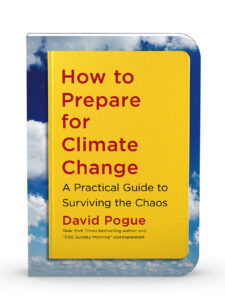 David is a technologist, columnist, entertainer and television reporter. From 2000 to 2013, he was the New York Times weekly tech columnist. After a five-year detour to Yahoo Finance, he now writes for the Times, WIRED, and OneZero on Medium. He’s a five-time Emmy winner for his stories on “CBS Sunday Morning,” a New York Times bestselling author, and a host of 20 science specials on “NOVA” on PBS. David is one of the world’s best-selling “how-to” authors, with more than 100 titles and 3 million copies in print. They include seven books in the “For Dummies” series, his Pogue’s Basics series of tips and shortcuts, and the Missing Manual series of computer books. David graduated summa cum laude from Yale in 1985 with distinction in music, and he spent ten years conducting and arranging Broadway musicals in New York. He has won a Loeb Award for journalism, and an honorary doctorate in music. He has been profiled on “48 Hours” and “60 Minutes,” and is regularly featured on “CBS Sunday Morning.”
David is a technologist, columnist, entertainer and television reporter. From 2000 to 2013, he was the New York Times weekly tech columnist. After a five-year detour to Yahoo Finance, he now writes for the Times, WIRED, and OneZero on Medium. He’s a five-time Emmy winner for his stories on “CBS Sunday Morning,” a New York Times bestselling author, and a host of 20 science specials on “NOVA” on PBS. David is one of the world’s best-selling “how-to” authors, with more than 100 titles and 3 million copies in print. They include seven books in the “For Dummies” series, his Pogue’s Basics series of tips and shortcuts, and the Missing Manual series of computer books. David graduated summa cum laude from Yale in 1985 with distinction in music, and he spent ten years conducting and arranging Broadway musicals in New York. He has won a Loeb Award for journalism, and an honorary doctorate in music. He has been profiled on “48 Hours” and “60 Minutes,” and is regularly featured on “CBS Sunday Morning.”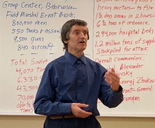
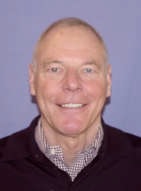
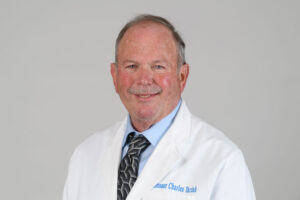

 Mark Nunan was born in Cork, Ireland, in 1953. At an early age, he moved to Homewood and then Hoover, Alabama. In 1971, he graduated from Indian Springs High School, where he was editor of the school newspaper and literary magazine, member of the Student Judiciary group and played in the soccer team. Mark graduated from the University of Alabama in 1976. He continued his education at Stanford University, where he was awarded a master’s in 1979 and a Ph.D. in 1983. During that same period, he was a George Lurcy Fellow at L’École normale supérieure and at the University of Paris-Sorbonne in Paris as part of his Ph.D. program. He was a member of Pi Kappa Phi academic honor society and participated in medical research in one of the largest blood pressure and cardiovascular disease research studies in the United States.
Mark Nunan was born in Cork, Ireland, in 1953. At an early age, he moved to Homewood and then Hoover, Alabama. In 1971, he graduated from Indian Springs High School, where he was editor of the school newspaper and literary magazine, member of the Student Judiciary group and played in the soccer team. Mark graduated from the University of Alabama in 1976. He continued his education at Stanford University, where he was awarded a master’s in 1979 and a Ph.D. in 1983. During that same period, he was a George Lurcy Fellow at L’École normale supérieure and at the University of Paris-Sorbonne in Paris as part of his Ph.D. program. He was a member of Pi Kappa Phi academic honor society and participated in medical research in one of the largest blood pressure and cardiovascular disease research studies in the United States.
